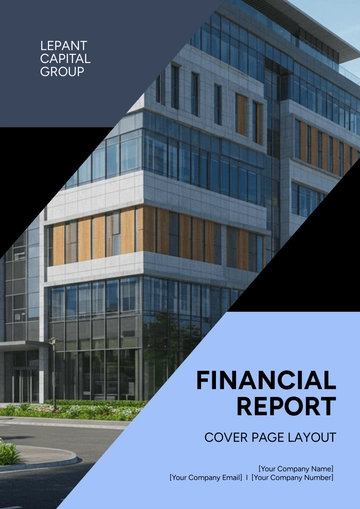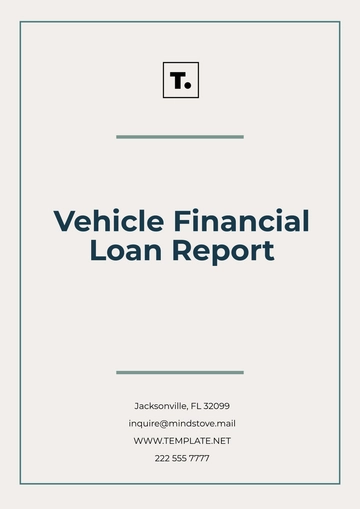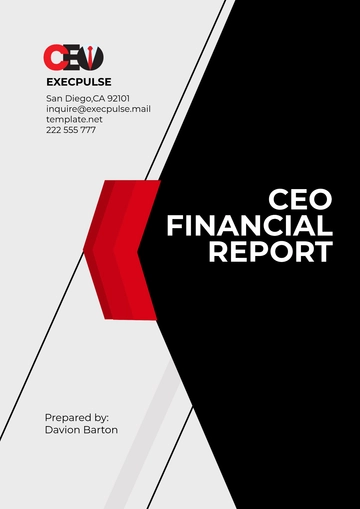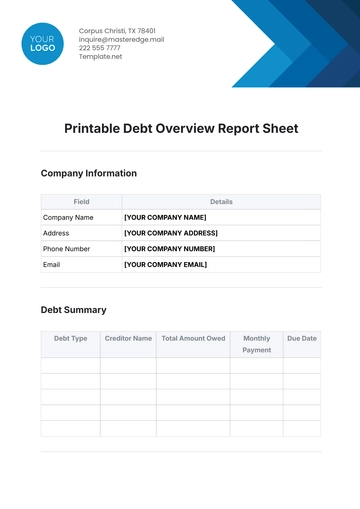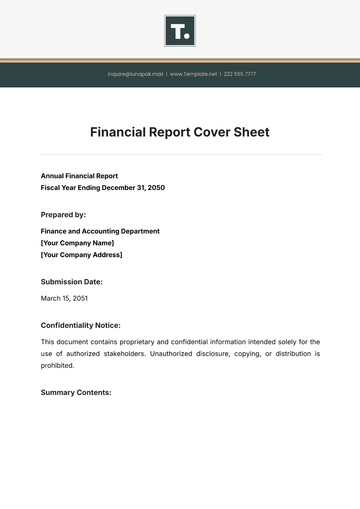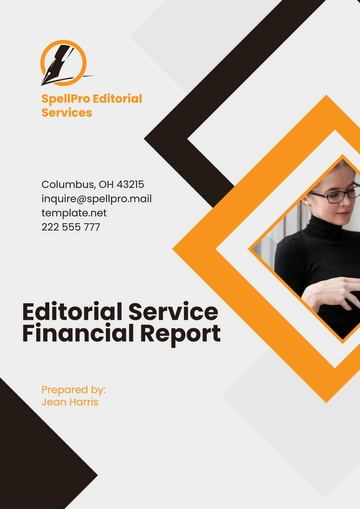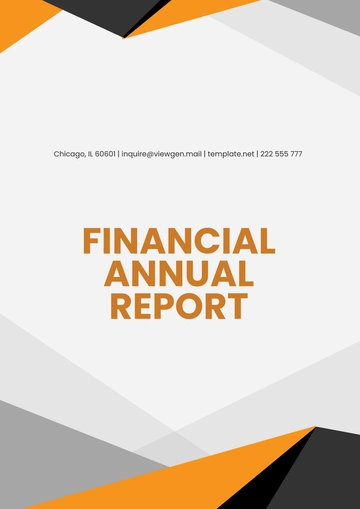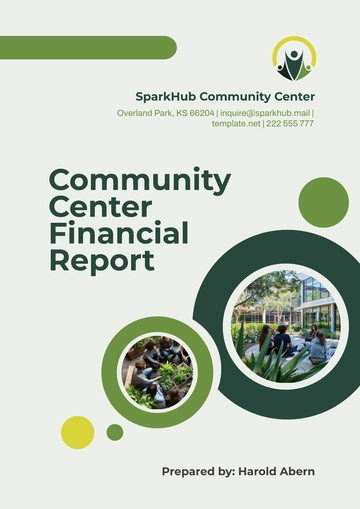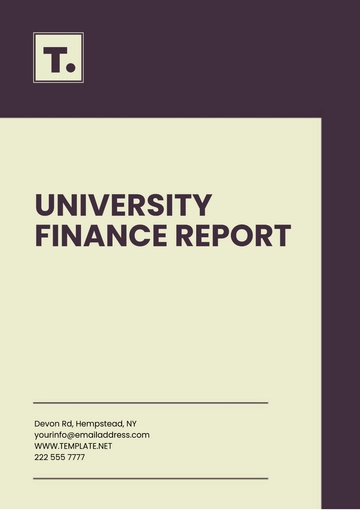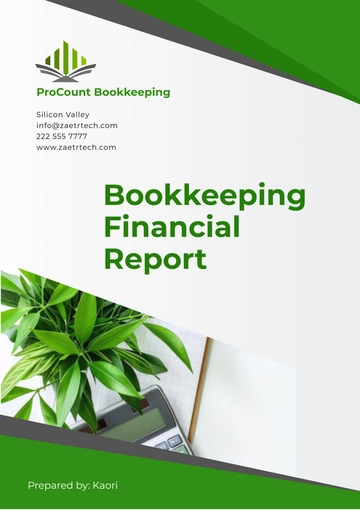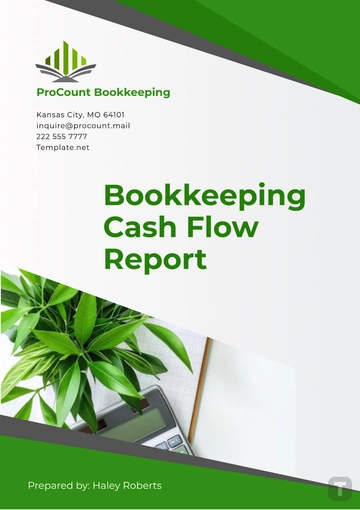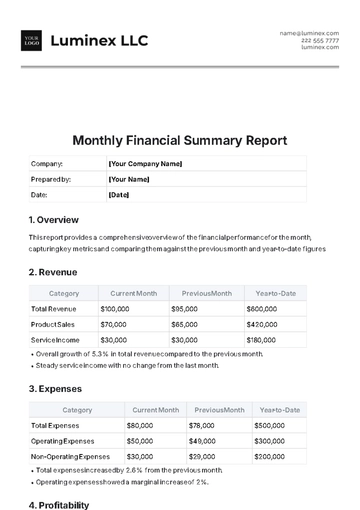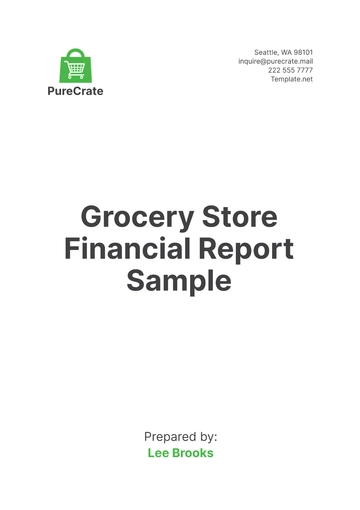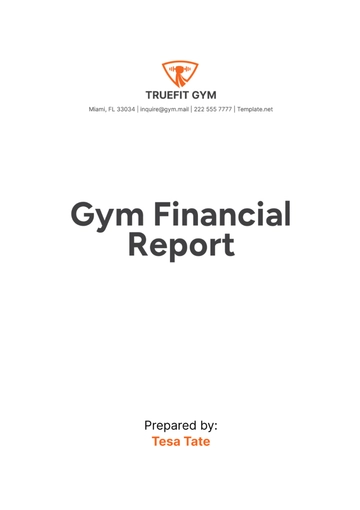Free Accounting Depreciation Report
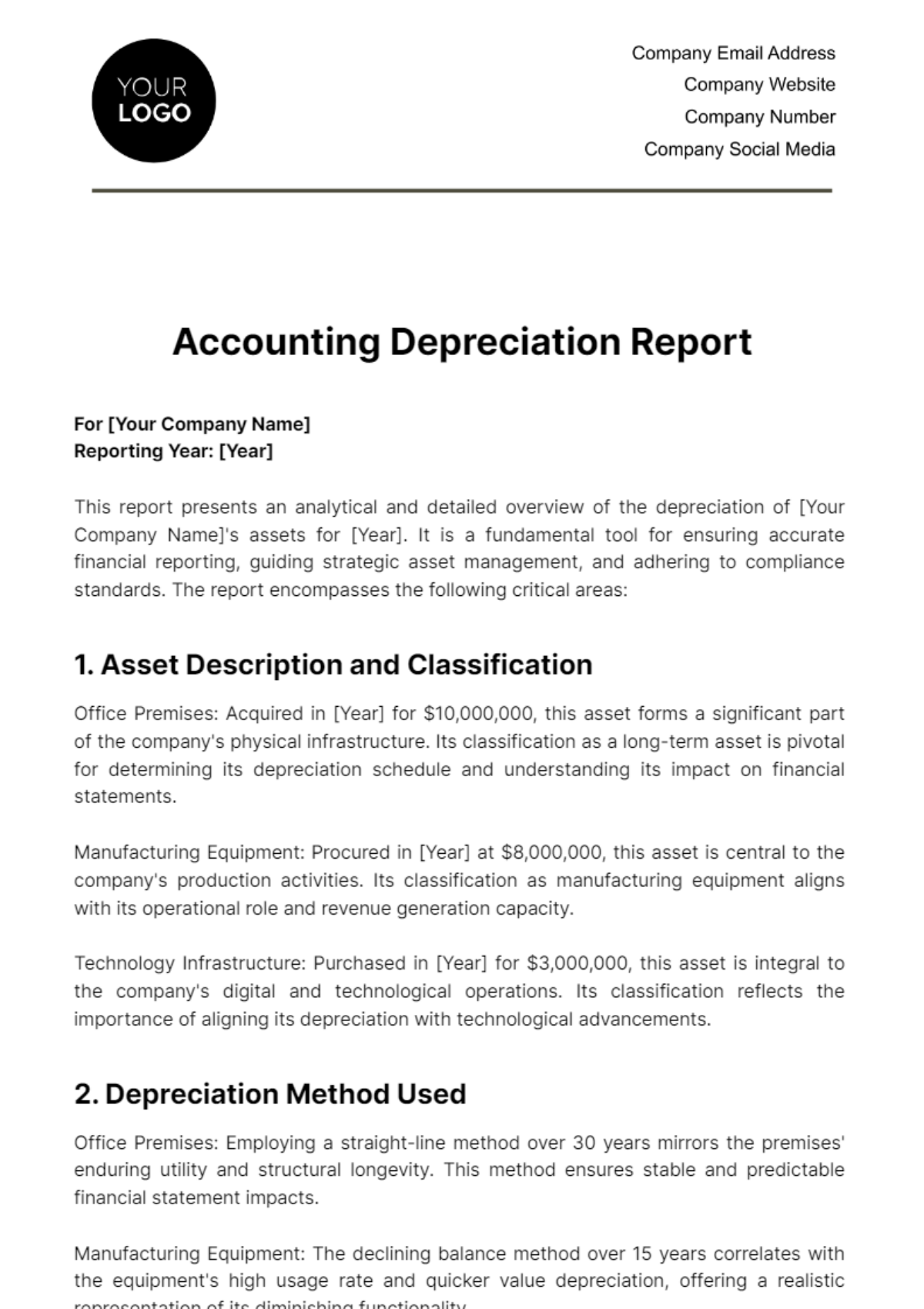
For [Your Company Name]
Reporting Year: [Year]
This report presents an analytical and detailed overview of the depreciation of [Your Company Name]'s assets for [Year]. It is a fundamental tool for ensuring accurate financial reporting, guiding strategic asset management, and adhering to compliance standards. The report encompasses the following critical areas:
1. Asset Description and Classification
Office Premises: Acquired in [Year] for $10,000,000, this asset forms a significant part of the company's physical infrastructure. Its classification as a long-term asset is pivotal for determining its depreciation schedule and understanding its impact on financial statements.
Manufacturing Equipment: Procured in [Year] at $8,000,000, this asset is central to the company's production activities. Its classification as manufacturing equipment aligns with its operational role and revenue generation capacity.
Technology Infrastructure: Purchased in [Year] for $3,000,000, this asset is integral to the company's digital and technological operations. Its classification reflects the importance of aligning its depreciation with technological advancements.
2. Depreciation Method Used
Office Premises: Employing a straight-line method over 30 years mirrors the premises' enduring utility and structural longevity. This method ensures stable and predictable financial statement impacts.
Manufacturing Equipment: The declining balance method over 15 years correlates with the equipment's high usage rate and quicker value depreciation, offering a realistic representation of its diminishing functionality.
Technology Infrastructure: The units of production method over 5 years ties depreciation costs directly to software usage and lifecycle, accurately reflecting its economic utility.
3. Calculation of Depreciation Expense
Office Premises: An annual depreciation of $333,333 systematically allocates the premises' cost across its useful life, affecting financial planning and budget allocations.
Manufacturing Equipment: An initial yearly depreciation of $1,600,000 aligns with the high early use of the equipment, matching its financial impact with operational utilization.
Technology Infrastructure: Variable annual depreciation based on software utilization adapts to fluctuating technology usage patterns.
Asset | Annual Depreciation | Method | Useful Life | Impact on Budget |
|---|---|---|---|---|
Office Premises | $333,333 | Straight-Line | 30 Years | Predictable allocation impacting long-term financial planning |
Manufacturing Equipment | $1,600,000 | Declining Balance | 15 Years | Aligns with high initial use, influencing early years' budgets |
Technology Infrastructure | Variable (based on usage) | Units of Production | 5 Years | Adapts to software usage, affecting technology budget annually |
4. Accumulated Depreciation and Net Book Value
Office Premises: By [Year], the accumulated depreciation of $3,333,330 demonstrates the gradual consumption of the asset's value, influencing long-term financial strategies.
Manufacturing Equipment: The accumulated depreciation of $12,000,000 by [Year] reflects the equipment's rapid use, informing maintenance and replacement decisions.
Asset | Accumulated Depreciation by [Year] | Net Book Value by [Year] | Total Cost | Remaining Value |
|---|---|---|---|---|
Office Premises | $3,333,330 | $6,666,670 | $10,000,000 | Reflects gradual value decline |
Manufacturing Equipment | $12,000,000 | Varies annually | $8,000,000 | Indicates rapid utilization and value reduction |
5. Impact on Financial Statements
Balance Sheet: Decreases in asset value due to accumulated depreciation directly affect the company's net worth.
Income Statement: Increased depreciation expenses reduce net income, impacting profitability.
Cash Flow: Depreciation, as a non-cash expense, affects operating cash flow and investment strategies.
Financial Statement | Impact | Detail | Asset Influence |
|---|---|---|---|
Balance Sheet | Asset Value Decrease | Decreases in asset value due to accumulated depreciation | Reflects a lower net worth due to asset depreciation |
Income Statement | Expense Increase | Higher depreciation expenses reduce net income | Influences profitability analysis and income reporting |
Cash Flow Statement | Non-Cash Expense Effect | Depreciation affects operating cash flow, not investing cash flow | Highlights the non-cash nature, impacting operational cash flow strategies |
Creating and maintaining an Accounting Depreciation Report enables [Your Company Name] to stay ahead of the financial implications of asset value diminishment over time, facilitating optimal resource allocation, budgeting, and strategic planning. This integrated approach offers a comprehensive view of the company's financial status, thereby embodying the firm's unique identity and promoting informed decision-making.
- 100% Customizable, free editor
- Access 1 Million+ Templates, photo’s & graphics
- Download or share as a template
- Click and replace photos, graphics, text, backgrounds
- Resize, crop, AI write & more
- Access advanced editor
Introducing Template.net's Accounting Depreciation Report Template: editable, customizable, and crafted for precision. Utilize our Ai Editor Tool for bespoke report generation. This professional template brings clarity and accuracy to your depreciation reports, vital for sound financial planning and strategy. Easily download and use this report template for your accounting.
You may also like
- Sales Report
- Daily Report
- Project Report
- Business Report
- Weekly Report
- Incident Report
- Annual Report
- Report Layout
- Report Design
- Progress Report
- Marketing Report
- Company Report
- Monthly Report
- Audit Report
- Status Report
- School Report
- Reports Hr
- Management Report
- Project Status Report
- Handover Report
- Health And Safety Report
- Restaurant Report
- Construction Report
- Research Report
- Evaluation Report
- Investigation Report
- Employee Report
- Advertising Report
- Weekly Status Report
- Project Management Report
- Finance Report
- Service Report
- Technical Report
- Meeting Report
- Quarterly Report
- Inspection Report
- Medical Report
- Test Report
- Summary Report
- Inventory Report
- Valuation Report
- Operations Report
- Payroll Report
- Training Report
- Job Report
- Case Report
- Performance Report
- Board Report
- Internal Audit Report
- Student Report
- Monthly Management Report
- Small Business Report
- Accident Report
- Call Center Report
- Activity Report
- IT and Software Report
- Internship Report
- Visit Report
- Product Report
- Book Report
- Property Report
- Recruitment Report
- University Report
- Event Report
- SEO Report
- Conference Report
- Narrative Report
- Nursing Home Report
- Preschool Report
- Call Report
- Customer Report
- Employee Incident Report
- Accomplishment Report
- Social Media Report
- Work From Home Report
- Security Report
- Damage Report
- Quality Report
- Internal Report
- Nurse Report
- Real Estate Report
- Hotel Report
- Equipment Report
- Credit Report
- Field Report
- Non Profit Report
- Maintenance Report
- News Report
- Survey Report
- Executive Report
- Law Firm Report
- Advertising Agency Report
- Interior Design Report
- Travel Agency Report
- Stock Report
- Salon Report
- Bug Report
- Workplace Report
- Action Report
- Investor Report
- Cleaning Services Report
- Consulting Report
- Freelancer Report
- Site Visit Report
- Trip Report
- Classroom Observation Report
- Vehicle Report
- Final Report
- Software Report
